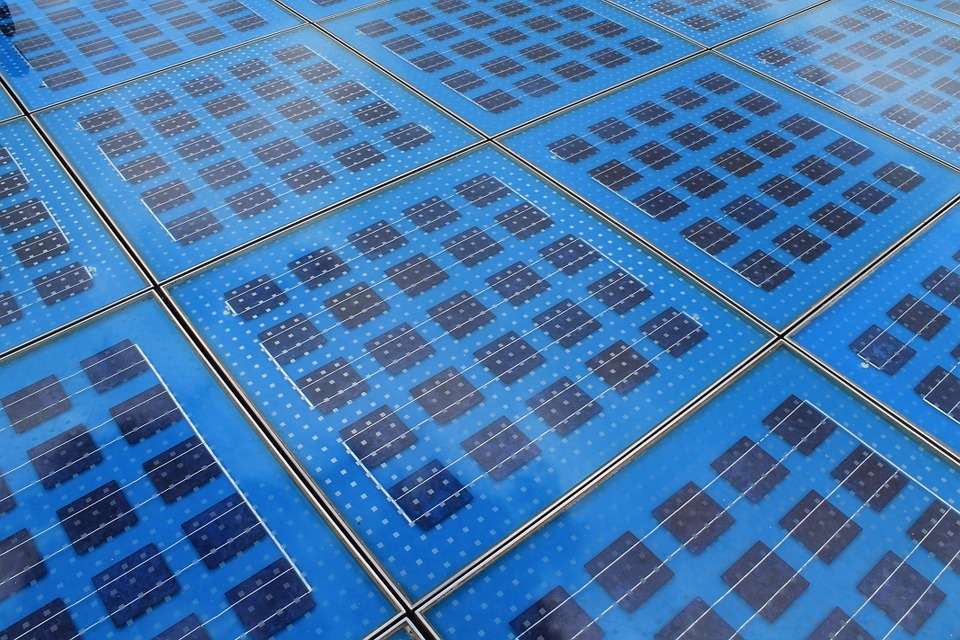The Solar industry is the single fastest growing renewable energy market in the world thanks to its ease of adoption. However, the technology used for this model has always been plagued with low energy-conversion efficiency, giving Big Oil supporters plenty of ammunition against it. In a stunning new development, scientists just created solar cells with the best efficiency in the market, which should solve this particular problem.
Capable of converting 44.5 percent of the sun’s power hitting the solar panels, these new solar cells are significantly more efficient than the standard variants in the market, Futurism reports. Just to put things in perspective, the solar panels that are available in homes and large-scale solar farms only get about 25 percent of the sun’s total energy output when the rays hit the surface of the earth.
One of the scientists behind the new discovery is George Washington University professor Matthew Lumb. In the school’s official news post, he explains how their solar cells are able to achieve such high rates of efficiency compared to others.
“Around 99 percent of the power contained in direct sunlight reaching the surface of Earth falls between wavelengths of 250 nanometers and 2,500 nanometers, but conventional materials for high-efficiency multi-junction solar cells cannot capture this entire spectral range,” Dr. Lumb said. “Our new device is able to unlock the energy stored in the long-wavelength photons, which are lost in conventional solar cells, and therefore provides a pathway to realizing the ultimate multi-junction solar cell.”
Increasing the efficiency of power conversion among solar cells is incredibly important because it could mean an energy revolution within the energy industry. If even 80 percent of the sun’s rays could be turned into usable energy and stored properly, it could mean the end of fossil fuel dependency. This would also lead to significantly cheaper solar panels.



 Apple Adds Eight Chinese Companies to Its Supply Chain After Axing Four
Apple Adds Eight Chinese Companies to Its Supply Chain After Axing Four  A Blend of Tradition and Technology: Finnish Roastery Launches AI-Developed Coffee Blend
A Blend of Tradition and Technology: Finnish Roastery Launches AI-Developed Coffee Blend  China's EV Price Battle Intensifies with Tesla's Strategic Cuts
China's EV Price Battle Intensifies with Tesla's Strategic Cuts  Crypto.com's Launch in South Korea Stalled by AML Regulatory Concerns, Postponement Announced
Crypto.com's Launch in South Korea Stalled by AML Regulatory Concerns, Postponement Announced  Thailand Cracks Down on Unlicensed Crypto Exchanges to Curb Crime
Thailand Cracks Down on Unlicensed Crypto Exchanges to Curb Crime  BYD Unwraps New Electric Pickup Truck It Named BYD Shark
BYD Unwraps New Electric Pickup Truck It Named BYD Shark  OpenAI Likely to Launch GPT-4.5 in 2024 Amid Surging AI Development Costs
OpenAI Likely to Launch GPT-4.5 in 2024 Amid Surging AI Development Costs  Shytoshi Kusama Secures $12M for Shiba Inu's New Layer-3 Blockchain
Shytoshi Kusama Secures $12M for Shiba Inu's New Layer-3 Blockchain  Samsung Responds to Green Line Display Fault with Free Screen Replacements, But There's A Catch
Samsung Responds to Green Line Display Fault with Free Screen Replacements, But There's A Catch  BMW Inaugurates Facility in South Korea for EV Technology Research and Development
BMW Inaugurates Facility in South Korea for EV Technology Research and Development  Bitcoin Halving Sparks Debate on Code Governance and Future Growth
Bitcoin Halving Sparks Debate on Code Governance and Future Growth  Hong Kong Crypto Firms Encouraged to Self-Regulate Amid Global Compliance Shifts
Hong Kong Crypto Firms Encouraged to Self-Regulate Amid Global Compliance Shifts  Amazon to Introduce Air Delivery Service in Arizona via Drone
Amazon to Introduce Air Delivery Service in Arizona via Drone  Venezuela Embraces Cryptocurrency for Oil Exports to Circumvent US Sanctions
Venezuela Embraces Cryptocurrency for Oil Exports to Circumvent US Sanctions  Nasa to overhaul mission returning samples from Mars – here’s why it must and will go ahead
Nasa to overhaul mission returning samples from Mars – here’s why it must and will go ahead  Coca-Cola, Microsoft Forge $1.1B Alliance for Cloud and AI Innovation
Coca-Cola, Microsoft Forge $1.1B Alliance for Cloud and AI Innovation  12 Solana Memecoins Fail Weeks After Raising $26.7 Million in Presales
12 Solana Memecoins Fail Weeks After Raising $26.7 Million in Presales 































